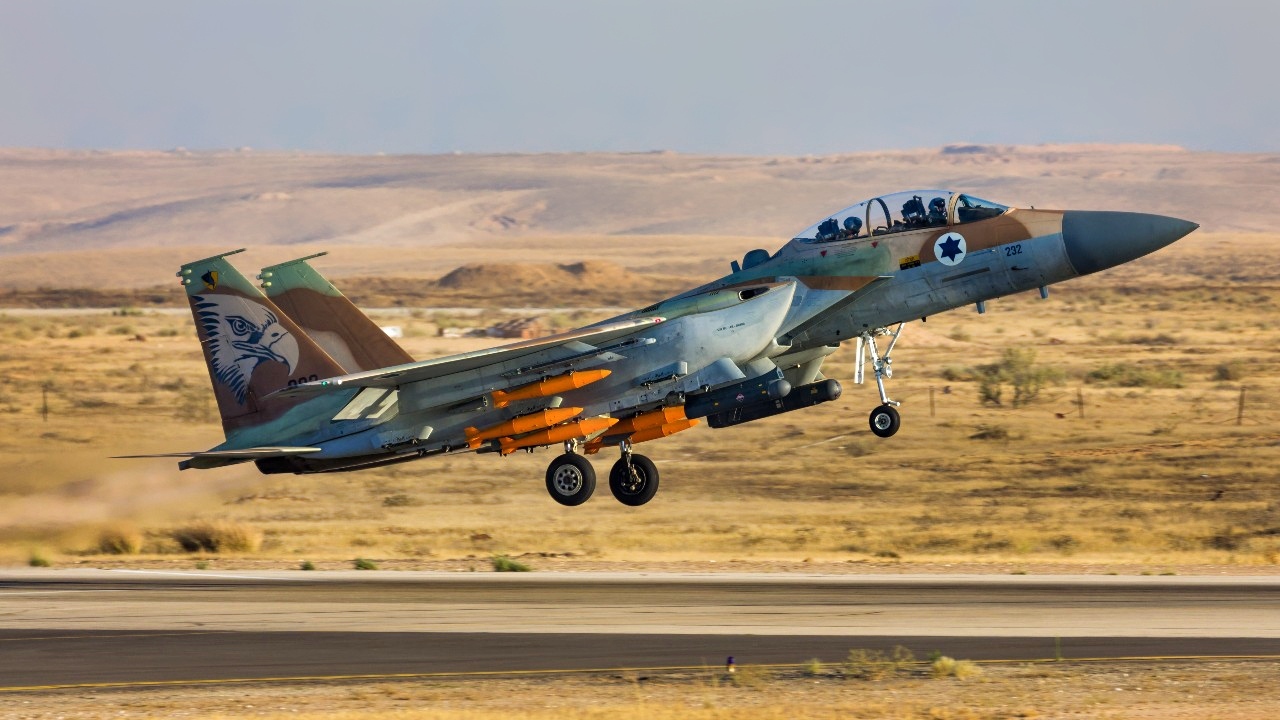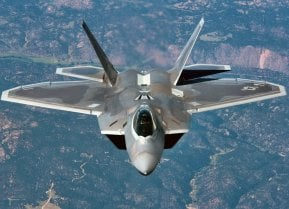F-21 Kfir: Israel Had 1 Fighter Plane No Country Ever Wanted to Fight
The F-21 Kfir, developed by Israel in the 1970s, is a Mach 2 fighter jet based on the French Dassault Mirage 5. After France cut off arms supplies following the Six Day War, Israel innovatively built its own version, integrating advanced avionics and the General Electric J79 turbojet engine.
Summary and What You Need to Know: The F-21 Kfir, developed by Israel in the 1970s, is a Mach 2 fighter jet based on the French Dassault Mirage 5. After France cut off arms supplies following the Six Day War, Israel innovatively built its own version, integrating advanced avionics and the General Electric J79 turbojet engine.

-Though its service in the Israeli Air Force (IAF) was short-lived, the Kfir became a sought-after export to nations like Colombia and even leased to the U.S. military for training.
-With versatile weaponry and impressive speed, the Kfir remains a globally respected fighter jet long after its IAF tenure.
Israel’s F-21 Kfir Fighter: A Lion Cub That Became an International Icon
Known in English as the “Lion Cub,” Israel’s F-21 Kfir fighter is based on a modified French Dassault Mirage 5. It has Israeli-built avionics and an Israeli version of the General Electric J79 turbojet engine. This warbird was the first Mach 2 aircraft acquired by the Israeli Air Force in the 1960s. The delta-shaped bird took flight for the IAF in 1975.
The Backstory
The backstory behind the development of the Kfir demonstrates the one-sided nature of geopolitics. The Israelis were content with the French Dassault Mirage 5s they had purchased as their main fighter. Indeed, there was no real push by Israel to go indigenous with the construction of this warbird.
That all changed in the immediate aftermath of the Six Day War.
In 1967, Israel awoke to find itself under attack from the combined armies of its Arab neighbors. Their goal was simple: to destroy the Israeli state and either annihilate all the Jews living within Israel or, at least, evict them; to make them refugees yet again. Israel fought back. They defeated the combined armies of their Arab neighbors, and the French Dassault Mirage 5 was one of the primary platforms with which the Israelis successfully defended themselves.
The Arabs, thoroughly dejected and humiliated by their resounding defeat, did what all the defeated powers of that region have done since Israel came around in 1947: They whined to the Europeans.
The French started to turn on their Israeli partners. Decrying Israel’s foreign-supported military, the Arabs pressured Western governments to stop selling advanced arms to the Israelis.
French leaders acquiesced, and this complicated the defense posture of the Israelis. Not to worry, though, the Israelis are one of the most innovative and industrious people in the world. They went about building their own version of the Dassault. The result was the impressive F-21 Kfir airframe.
It was quickly embraced by the IAF.
The Kfir Fighter: Pushed Aside
The airframe’s service was shortlived. Just a few a year after they went into service for the IAF, the Israeli government purchased a block of F-15 Eagles from the U.S. That became the primary IAF fighter, relegating the Lion Cub.
In terms of specifications, according to Airforce Technology these warbirds utilized a mixture of armaments – about 13,415 pounds of weapons, to be precise – ranging from a 30mm cannon to missiles, bombs, and rockets.
The Lion Cub carried the Python 3, Python 4, and Python 5 air-to-air missiles. These birds could carry other classes of air-to-air missiles, such as the Alto and Derby systems. Complementing these munitions were air-to-surface missiles such as the Gabriel and NT-Dandy systems.
The F-21 Kfir was loaded with some interesting self-defense systems, too. First among them was the EL/L-8212. This system was essential for protecting the plane from incoming surface-to-air and air-to-air weapons.
An updated variant, the Kfir C7, was given two additional external hardpoints, adding to the weapons-carrying capability of the F-21. The C7 variant can also carry smart bombs. Its advanced doppler radar systems give the pilot greater situational awareness, and updated electronics in the cockpit allow for more accurate in-air refueling.
An F-21 can fly at about 1,400 miles per hour. It has a range of a little more than 800 miles when fully loaded with fuel and armaments.
The Kfir Fighter: An International Sensation
Although the IAF quickly favored the F-15, the service did not simply mothball the Kfir. Instead, the Israeli government exported the F-21 to multiple countries, where they are wildly popular. The Israelis even ended up leasing 27 of these birds to the United States military, where they were used by U.S. forces as training planes.

So while they were not the primary warplane of the IAF for very long, their status as a legendary and reliable plane has endured. The Colombian military, for example, ordered a tranche of these fighters in 2006 and accepted delivery from Israel in 2009. These birds were built with the most modern systems available, meaning that Colombia operates one of the best fleets of F-21 Kfirs on the planet.
About the Author:
Brandon J. Weichert, a National Interest national security analyst, is a former Congressional staffer and geopolitical analyst who is a contributor at The Washington Times, the Asia Times, and The-Pipeline. He is the author of Winning Space: How America Remains a Superpower, Biohacked: China’s Race to Control Life, and The Shadow War: Iran’s Quest for Supremacy. His next book, A Disaster of Our Own Making: How the West Lost Ukraine, is due October 22 from Encounter Books. Weichert can be followed via Twitter @WeTheBrandon.
All images are Creative Commons.


